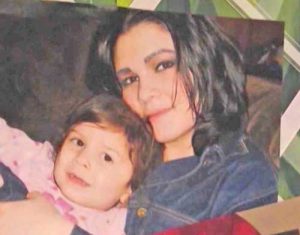
After almost two weeks, the trial of Zachary Whisenhunt for Murder, that included ten days of testimony and two days of deliberation, a Fairbanks jury returned a verdict of guilty of Murder II against the defendant.
On Tuesday afternoon, the jury announced that Whisenhunt was guilty on two counts of Murder II and one count of Tampering with Physical Evidence in the death of then 31-year-old Janessa Kempski in 2014.
Kempski’s remains were found on an ATV trail in North Pole in early November of 2014. Kempski was last seen alive at just before 2 am on October 23rd of that year at the South Cushman Holiday Gas Station. When seen early that morning, she was with Whisenhunt. Her suitcase was found in the area the following day.
The State Medical Examiner’s report stated that she had suffered blunt force trauma to the head, but, said the official cause of Kempski’s death was unclear because of the length of time her remains were out in the elements and unfound. Her body was out in the weather for as much as 12 days.
Whisenhunt’s attorney, Emily Cooper, tried in court to place Kempski’s death on Isaac Horman, a man that she said Kempski may have had a prior relationship with. She pointed out in court that even though Whisenhunt’s DNA was found on Kempski’s person, so was DNA from Horman. She told the court that Horman was responsible for her death and the disposal of her remains along the Chena River.[xyz-ihs snippet=”Adsense-responsive”]The state put forward a strong case, pointing out that even though Horman’s DNA was found on Kempski’s person, Whisehunt’s DNA was found under the victim’s fingernails, on her clothing and under her belt.
The prosecution also pointed out that Whisenhunt’s cell phone pinged in the area where the victim’s body was found in the time frame of her disappearance. In contrast, Horman’s cell phone showed no pings near that location.
The prosecution also put forth further evidence that while in jail, a call from the jail showed that Whisenhunt knew facts in the case that were not released to the public and were only known to the investigators and the Medical Examiner.
The sentencing date has yet to be scheduled in the case.
